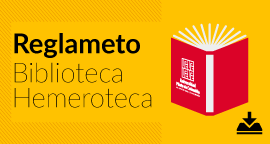| dc.contributor.advisor | Gil Ibáñez, Janneth Patricia / Directora | |
| dc.contributor.author | Ospina Saldaña, Luis David | |
| dc.date.accessioned | 2025-02-28T17:30:44Z | |
| dc.date.available | 2025-02-28T17:30:44Z | |
| dc.date.issued | 2024-11-19 | |
| dc.identifier.uri | http://repository.unipiloto.edu.co/handle/20.500.12277/14198 | |
| dc.description.abstract | El proyecto de grado estudia la influencia que presenta el concreto con respecto a la
resistencia mecánica, al adicionarle diferentes porcentajes de fibra, para dicho estudio se realizó diferentes ensayos a los agregados, tanto al agregado grueso como al fino, la arena es de rio y fue comprada en una ferreteria y la grava fue suministrada por la universidad, los ensayos que se realizaron fueron: ensayo granulométrico, ensayo de contenido de humedad
ensayo de densidad y absorción, masa unitaria, índice de alargamiento y aplanamiento, | ensayo de caras fracturadas, ensayo de material más fino que pasa por la malla N° 200,
ensayo de abrasión; dichos ensayos fueron realizados para determinar las propiedades de los
agregados para así poder realizar el diseño de mezcla por el método NSR-10 (Norma sismo
resistente). La fibra de coco fue comprada en CONFIABONOS S.A.S, Barrios Unidos, Bogotá
Los porcentajes de fibra utilizados fueron de 10%, 15% y 20% con una longitud de 10 cm, los
porcentajes se incorporaron a la mezcla en relación con el volumen de la dosificación del
concreto. Se elaboraron 45 probetas cilíndricas donde 9 probetas son la prueba patrón, otras
9 probetas patrón que fueron diseñadas para someter a cambios de temperatura en la mufla
de laboratorio, otras 9 probetas se les agrego 10% de fibra, otras 9 probetas con el 15% y por último otras 9 probetas con el 20% para hacer el ensayo a compresión en los días 7, 14 y 21.
Los porcentajes de resistencia a compresión de las ultimas 15 probeta a los 21 dias son: prueba patrón sin mufla 141,87%, prueba patrón con mufla 97,32%, prueba con 10% de fibra
72,94%, prueba con 15% de fibra 71,24% y prueba con 20% 48,84% | es |
| dc.description.abstract | The degree project studies the influence that concrete has with respect to the
mechanical resistance, when adding different percentages of fiber, for this study different tests
were carried out on the aggregates, both coarse and fine aggregate, the sand is from a river
and was bought at a hardware store and the gravel was supplied by the university, the tests
that were carried out were: granulometric test, moisture content test, density and absorption
test, unit mass, elongation and flattening index, test of the finest material that passes through
the No. 200 mesh, abrasion test; These tests were carried out to determine the properties of
the aggregates in order to be able to design the mix by the NSR-10 method
(Earthquake-resistant standard). The coconut fiber was purchased at CONFIABONOS S.A.S,
Barrios Unidos, Bogotá. The percentages of fiber used were 10%, 15% and 20% with a length
of 10 cm, the percentages were incorporated into the mixture in relation to the volume of the
concrete dosage. 45 cylindrical test tubes were made, where 9 test tubes are the standard test,
another 9 standard test tubes that were designed to be subjected to temperature changes in
the laboratory muffle, another 9 test tubes had 10% fiber added, another 9 test tubes with 15%
and finally another 9 test tubes with 20% to do the compression test on days 7, 14 and 21. The
compressive strength percentages of the last 15 test tubes at 21 days are: standard test
without muffle 141.87%, standard test with muffle 97.32%, test with 10% fiber 72.94%, test with
15% fiber 71.24% and test with 20% 48.84%. | en |
| dc.subject | Concreto, fibra de coco | es |
| dc.title | “Adición de Fibra de Coco en Probetas de Concreto para Mejorar la Resistencia a la Compresión y Mejorar los Cambios de Temperatura” | es |
| dc.type | Trabajo de Grado | es |
| dc.creator.modality | Presencial | es |



